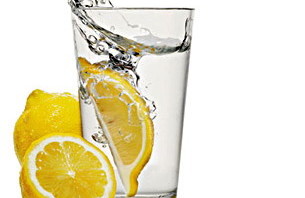
Many of my friends choose to start diets on January 1. There are varying opinions on this philosophy, some saying it’s good to have comradery since everyone else is doing it, others saying it’s not a good idea. But I found this article and thought the author’s perspective was unique. I hope you enjoy it.
BY Amanda Christian
Published on MindBodyGreen January 3, 2013
For a solid decade of my life, I dieted, lost weight, gained it back, tried a new diet, hated myself, became body obsessive and completely lost my intuitive sense of when I was actually hungry. When I finally tried what felt like every diet, and lower self-esteem was the only consistent result, I knew there had to be a better way.
I reached the point where the thought of a diet was more painful than the thought of getting honest with myself. This is when I stopped dieting.
What followed was a journey back to my true self, freedom, and a connection with my inner guide.
Below are some reasons to hop on an inner journey this year instead of another diet:
1. They are not based on your intuition.
Why would you want anyone else to tell you what and when to eat over your own intuitive knowing? Don’t look to anyone else to tell you what is right for you. When you really take note of how you feel after eating certain foods, you will naturally gravitate towards ones that nourish you. Let your intuition shine here.
2. They are often used as punishments for what you have eaten .
Food is not supposed to be stressful. Telling yourself you will start to eat “healthy” on January 1st implies an all-or-nothing mentality. There is no such thing as “good” eating days and “bad” eating days; it’s just food.
Since when did food have the power to dictate a good or bad day? You are giving that slice of cake all the meaning it has for you. No matter what you eat, make a firm decision that you will not punish yourself for it.
3. They are often very complicated .
Who really wants to count calories or weigh out portions? Eating is simple; eat what your body wants when you are hungry, and stop when you are satisfied. When you want to eat when you are not hungry, chances are there is a feeling or thought to look at and release instead.
I spent years using food to suppress my feelings, but what I have realized is that to feel them instead is not nearly as scary as we tell ourselves it will be.
4. They breed feelings of deprivation, which frequently leads to overeating .
And then the overeating leads right into some serious self-loathing and feelings of failure. All the sudden you find yourself back at #2 above. The good news is this is just a mental pattern you can change! You are innocent, beautiful and deserving of peace and happiness no matter what you do, say, eat or think.
Do not listen to the voice that tells you otherwise. Tell yourself often that you deserve happiness and love. You don’t even have to believe it. Just repeat it, but with enough repetition, eventually you will believe it.
5. Constantly doing things you don’t enjoy causes stress .
Planning out what and how much you are going to eat everyday can be stressful. I used to feel like I was in a food prison. I was scared to do anything out of my routine in case I would not be able to stay on my diet.
I often skipped social activities with my friends because I didn’t want to be tempted. This is not love; this is fear.
The truth is, you are not your body, you just have one. The body is a limit and you are limitless. Don’t wait for the promise of a diet to compel you towards change. The outer is a result of your thoughts. Set the intention to change your mind, and the body will follow. We give diets and food all the power they have for us, so this year, lets practice taking it back.
Dive into your thought system and look at the web of illusions you tell yourself about yourself. This is when our inner guides come forward and show us how to release these beliefs.
Just be willing, and the resources that you need will come to you. It might seem uncomfortable at first, but trust me; the freedom on the other side is more than a diet will ever offer you.







- Facebook
- Instagram
- Twitter
- YouTube
- Pinterest
Follow @Honeybee_Grdns